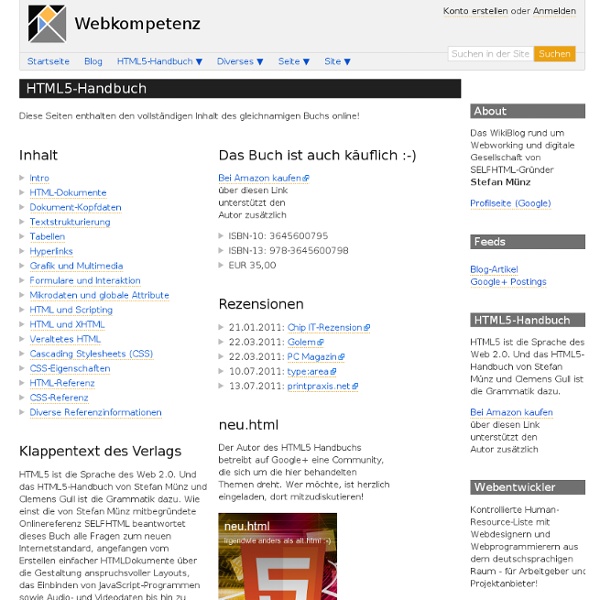HTML5-Handbuch - Webkompetenz

HTML Tutorial
Initializr - Start your HTML5 project in 15 seconds!
Related:
Related:



